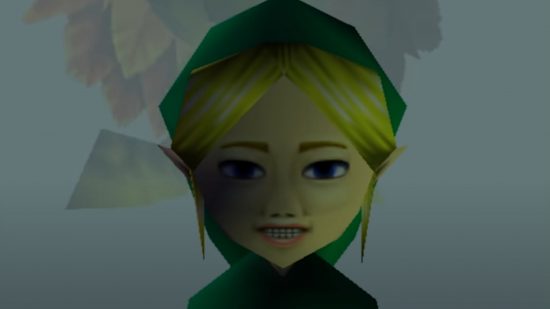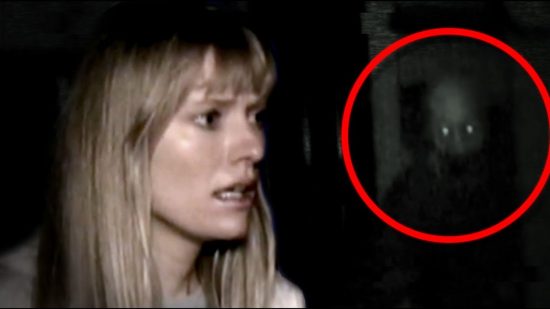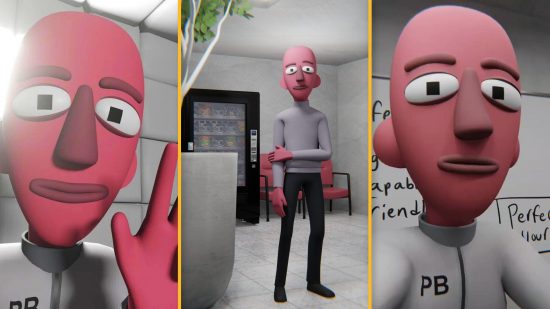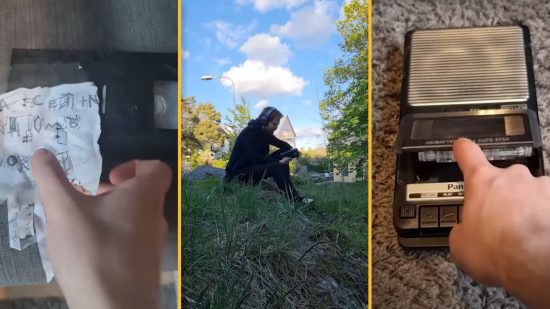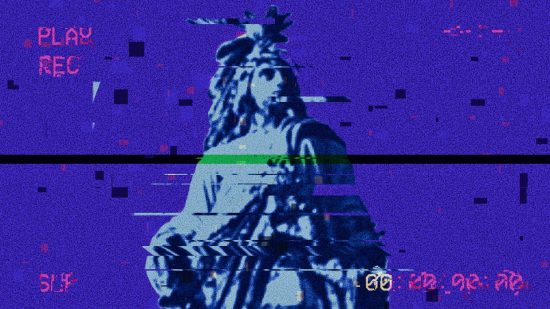The world of gaming is ever-expanding, with new genres and sub-genres cropping up all the time, and fresh facilities making game creation far more accessible to up-and-coming indie talents. And, with all of this advancement, a new form of interactive storytelling has been quietly evolving in the background and is slowly beginning to make itself known to the mass populace – ARGs and Unfiction projects.
As someone who has been a part of the ARG community for many years now, I’ve been chomping at the bit to finally talk about it at length. So please sit back, grab the nearest cryptid for a cuddle, and make yourself a warm cup of elder blood, as we dive into what exactly ARGs and Unfiction are, how to differentiate between the two, and why I think they’re one of the most exciting phenomena to enter the gaming world. Of course, I’ll also recommend some of my favourite ARGs, and provide a couple of great content creators to guide you through them.
What is an ARG?
ARGs, short for ‘alternate reality games’, is an interactive networked narrative, often driven through social media, that relies on player interaction. The players’ ideas and inputs may affect the outcome of the story depending on how they play into the creator’s plans. ARGs employ a form of transmedia storytelling that generally combines real-life and digital aspects, relying on players to solve a series of plot-based puzzles and challenges to uncover the mysteries behind the narrative and keep the story progressing.
On the other hand, Unfiction is a term recently coined to refer to ARGs with narratives that don’t alter regardless of player participation. These are more like an experience that players view from the outside, and often theorise over on community boards and forums.
Both ARGs and Unfiction projects rely on the merging of reality and fiction, as well as the audience’s ability to suspend disbelief and ‘play along’, essentially pretending that everything happening within the game is real. It’s considered bad form to comment on ARG or Unfiction pieces highlighting that they are not real, or attempting to pull back ‘the curtain’ and draw focus to surreal or unbelievable aspects.
ARGs and Unfiction narratives generally steer towards the macabre more than anything else, with deep roots in horror, sci-fi, and thriller narratives. Of course, there are some deviations from this, but uncovering the secrets and mysteries of the dark and unusual certainly has a sense of gravity, right? Nothing gets the blood pumping more than a creepy mask, a grainy filter, and a hidden cryptograph!
The reason I think ARGs are such an important expansion to the gaming world predominantly revolves around accessibility. Anyone with an internet connection can get involved in an ARG in some way, whether it’s by solving puzzles, sharing posts, or theorising on community boards.
Similarly, it offers an avenue for creative minds that may not otherwise be able to share their ideas. While it’s handy to have for those spooky websites and hidden codes, creating an ARG doesn’t require any coding or game development knowledge. All you need is a great idea, a creative streak, and the ingenuity to get your project out there. And, while large companies have dabbled in ARGs to promote products, games, and shows in the past, the most iconic ARGs are driven by small, independent groups of individuals armed with little more than a camera, some video editing software, an internet connection, and a spooky dream.
ARG terminology
Here are some general terms that you’ll likely hear when diving into any ARG space.
Puppet-master
Essentially this medium’s version of a ‘Dungeon Master’ or ‘Game Master’, the Puppet-master or ‘PM’ is the name given to the person who created and/or is running the game. PMs often hide their identity throughout the game in order to maintain the illusion, and may, at times, not even be an obvious part of the game itself. They are neutral, and neither on the player’s or the antagonist’s side.
The curtain
A reference to the Wizard of Oz, ‘the curtain’ is a metaphor for both the divide between the players and the PM, as well as the division between reality and fiction.
Rabbitholes
You’ve likely heard the term ‘rabbithole’ before. Referring to Alice in Wonderland, generally, a rabbithole is the initial website, puzzle, or contact that starts off an ARG, beginning small but leading into a deep and winding network of puzzles, clues, and plenty of other features for players to explore.
Trailhead
Trailheads are clues that allow players to discover a way into the game. These are often spread across a variety of different mediums and platforms to encourage as many people as possible to get involved in the game – for example, a PM may post a video on YouTube, share it on Reddit or other social media platforms on a dummy account implying that they ‘just found something weird’, and then have the description of the video lead to a website rabbithole. When we say it’s an interactive networked narrative, we really mean the ‘networked’ part!
TINAG
Short for ‘this is not a game’, TINAG encourages players to pretend the game is real, and suggests that elements like phone numbers and email addresses included in the game actually function.

The rules of ARGs
Now that we’ve got all that out of the way, we have to stress some very important rules before we dive into the fun part. There are a set of rules that everyone getting involved in ARGs should heed, for the safety of themselves, the PM and actors in the game, and the general public outside of the game.
Game Theory’s MattPatt put it very well in his Stop the FNAF ARG hunt video above, so please check that out to get a full scope of the risks associated with careless conduct in the world of ARGs. But for the full written list, check below.
- Never publish private information – even if you think it may be associated with the ARG, doxxing anyone is dangerous and illegal
Stick to publicly available information – don’t try tearing down that curtain by uncovering the personal information of individuals or businesses - Be safe in public and do not trespass – some ARGs may require players to visit real-life locations, such as the statue in the Gravity Falls ARG. Be safe if you decide to visit these locations, bring someone with you, and never trespass on private property, no matter how much of a lead you think you have
- Do not call private businesses or individuals – sometimes, a defunct business or fictional locations may crop up in a game and have correlations to real-life places, but that doesn’t give you the right to call people from outside the game to ask about it. While one phone call may not have much of an impact, a couple of hundred calls from different players constitutes as harassment, and gets you nothing but a bad name for the ARG community
- Find one central place online for ARG discussion – find your community, whether it’s on Discord, Reddit, or elsewhere, so players aren’t repeatedly trying to do the same stuff. Plus, sharing your findings and seeing what others have discovered makes the game more fun!
Best ARGs and Unfiction projects for newbies
Here are some of my favourite ARGs and Unfiction projects. I feel they’re a great introduction to the world of ARGs, and offer a strong insight into what to expect when diving into a game. Though, I’m not gonna lie, there are so many more I would have loved to include – but I’ll leave those for you to find as you embark on this new journey!
Most of these projects are finished now, but you can catch up on all the details in videos by ARG Youtubers like the ever-awesome Nightmind.
Marble Hornets
An early entry into the modern ARG world, Marble Hornets is inspired by the Slender Man mythos and primarily revolves around a series of 133 YouTube videos. With its original release running from June 20 2009, to June 20 2014, it follows a young man called Jay Merrick, who attempts to find out what happened during the filming of Marble Hornets, an unfinished student film that was helmed by his friend, Alex Kralie.
It’s a wonderfully chilling tale that sees a group of likeable guys unravelling the mystery that surrounds the otherworldly threat of a creature known as The Operator, and a true cornerstone of the modern ARG world.
If you’re interested in Slenderman-inspired content, or you particularly enjoy Marble Hornets, I highly recommend also investigating TribeTwelve and Everymanhybrid – the latter of which is easily one of my favourite ARGs of all time. While I’d love to dive deeper into both of these beauties, I fear this list would never end if I did!
Wham City Comedy and Alan Resnick
Okay, Wham City Comedy itself isn’t an ARG but an art and performance collective based in Baltimore, Maryland. Both Wham City and one of the members, Alan Resnick, have made some brilliant, mind-bending Unfiction and ARG-esque projects that have made a major impact on this form of interactive storytelling.
Some of Wham City’s most iconic projects include the experimental ‘This House Has People in It’, which appears, at its surface, as little more than an unusual 11-minute YouTube short film that, through a series of surveillance cameras, reveals the secrets hidden inside a seemingly normal suburban home. However, the video also links to the surveillance company’s website and, from there, plenty more secrets wait to be found.
A similar project named ‘Unedited Footage of a Bear’ is also available on YouTube and, of course, is far more than a ten-minute clip from the Nature Channel, regardless of what its name suggests.
When it comes to the genius that is Alan Resnick, his most famous project is easily the YouTube web series, Alantutorial. This amazingly atmospheric, disturbing, and heart-wrenching series follows a young man called Alan, who religiously releases tutorial videos, regardless of what chaos and misfortune befall him in real life. While this is easily one of my favourite projects on this list, I need to highlight that it can be quite emotionally distressing.
Honestly, whether you fancy diving deep into an ARG or Unfiction project, or you’re just looking for some weird, uncanny videos to watch while curled up on the sofa, both Wham City and Alan Resnick have plenty of gems for you to peruse.
Ben Drowned
You’ve probably heard about the Ben Drowned creepypasta, but did you know that there’s a whole ARG associated with it? Originally published as Haunted Majora’s Mask Cartridge, the Ben Drowned ARG is a three-part multimedia series created by Alexander D. Hall. Its publication date runs over an entire decade, with its story revolving around a college sophomore called Jadusable who acquires a haunted N64 game cartridge of The Legend of Zelda: Majora’s Mask.
It’s a brilliant and ingenuitive series with a cleverly played-out plot, brilliant use of a variety of mediums, and a truly unsettling atmosphere. If you enjoy the Ben Drowned ARG, or are looking for another project with roots in retro-gaming, you should check out the brilliant web series, Petscop.
Paranormal Paranoids
If you like ghost hunting shows like Most Haunted, Ghost Adventures, or Dead Files, or you really enjoyed the Grave Encounters movies, you’ll probably love this one. Paranormal Paranoids were a group of ghost hunters who uploaded their investigations to YouTube – until their investigations got too real, and one member supposedly disappeared. Uncover a weird and wonderful web of supernatural spooks as you trawl through reuploads of their old videos, and watch the unusual interactions between the supposed ‘fans’ who were there from the start.
PBHere
PBHere is not as well-known or commonly discussed as the projects I’ve mentioned above, but is certainly worth mentioning. Unlike many other projects that predominantly revolve around YouTube videos and website links, PBHere mostly takes place on TikTok, with the protagonist asking the viewers to help him make decisions. Plus, it’s fully animated! I won’t spoil any more, as it’s a relatively short project that you can watch in full on the PBHere TikTok channel. Just be prepared for some weird, reality-warping shenanigans!
Daisy Brown
I really, really adore the Daisy Brown ARG. Run by one very talented creator, it follows the life of a sheltered young woman who lives alone, taking care of a very unusual monster. It’s ambitious, moving, and truly emotive, with some great spooks in there to boot, and the main character of Daisy is believable, relatable, and absolutely lovable.
If you enjoy this one, you should also check out the wonderfully witchy Echo Rose or the heavy, heartfelt Hi I’m Mary Mary.
10 Tapes
10 Tapes is a brilliant ARG that follows a protagonist known as ‘H’ as he travels across Sweden, collecting a series of ominous VHS tapes. With an amazing scope, expansive narrative, and charismatic main character, 10 Tapes was a true joy to follow from start to end, and still holds up now that the game is over.
The Monument Mythos
Probably the most extensively covered of late, The Monument Mythos is an intense analogue horror series with a nostalgic, VHS lost media-style aesthetic. Expanding on common conspiracy theories, it explores an alternate history of America through a series of mockumentary-style videos that document bizarre and unexplainable events occurring near national landmarks such as the Statue of Liberty or Mount Rushmore.
If you enjoy this one, there are plenty of other great analogue series out there, including the unnerving Walten Files, which gives Five Nights At Freddy’s meets Bendy and the Ink Machine vibes.
That’s it. I’m stopping there. I could honestly go on for days about this wonderfully unique form of interactive storytelling, but alas, I have other demons to slay today. I hope this beginners guide to the world of ARGs and Unfiction provides you with a trailhead leading deep into the world of indie horror on the internet. But, for now, I’m going to go back and rewatch Nightmind talking about Everyman Hybrid for the hundredth time.




